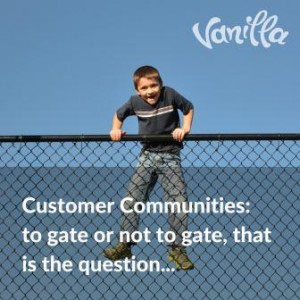Audio as a form of media has been growing steadily for years. But with the recent rise of social audio platforms and their democratization of social spaces, brands found in audio a gap with exciting opportunities for connecting with audiences. What’s better is that these audiences are some of the most engaged in media, allowing for higher retention and engagement than traditional media.
So, why exactly is brand storytelling on social audio important for brands? Let’s look at what makes audio such a growing industry and the potential it holds for business.
Why Audio?
Content like podcasts, audiobooks, and social audio have a retention rate twice as high as written content. In the age of short attention spans, the conscious listening audio provides is gold. Additionally, audio doesn’t require listeners to stop what they’re doing to consume it. Listeners are often at the gym, in their car, or even grocery shopping. They’re busy with their hands while actively listening, which also means they’re less likely to skip through ads when they encounter them.
Audio Goes Social
Despite audio being a rising star on its own, like we’ve seen on Podcasts, social audio only came into the spotlight after Clubhouse, the live conversation app, gained popularity. Since then, other companies have followed suit, including LinkedIn, Twitter, and Spotify, starting and buying out similar platforms for discourse.
Overall, theories on the root cause of the surge of unfiltered, live audio vary. Most tend to include the lack of human interaction and Zoom fatigue brought on by the pandemic.
So, what makes these platforms so attractive? For users, they offer respite from a screen-. Some even call social audio the “Goldilocks” of the 2020s. When text has become too much, and video is exhausting after a long day working from home, social audio offers communication and empathy, minus the pressure. With social audio, spontaneous audio conversations about any topic are a tap away, and content creators, celebrities, and brands alike have jumped on to take the mic.
Possibilities and Challenges of Integrated Marketing on Clubhouse
While many brands see social audio as the new frontier, it offers as many challenges as it does possibilities. Here are some of the most intriguing:
Challenges of audio
- Discoverability and growing rooms to 1000+ people. The social audio apps haven’t developed to meet the discoverability of other social media, like TikTok, where finding and getting an audience is more accessible than on any other platform. In the beginning stages of social audio, many brands —namely those with fewer resources— will focus on developing the media they already have instead of starting anew with audio
- Measurement. Measuring social audio isn’t easy but it’s critical to quantify the levels of investment in programs.
- PR problems. When brands are responsible for, let’s say, a room of live audio on Clubhouse, moderation is key. Brands are responsible for what happens in that room — both regarding abuse and their brand’s reputation.
Opportunities for brands
- New influencer opportunities. Suppose brands choose to not develop their own rooms or channels for audio. In that case, they can leverage influencers to tell their story on the platform. With Clubhouse’s rollout of the payment feature, sponsoring creators is easier than ever.
- Giveaways and Ad-centered conversations. Sponsored conversations are already happening on social audio apps. Still, they’re bound to grow further as a part of conversation games, “off-the-cuff” Q&As. Brand giveaways,
- The rise of audio creator agencies. As with influencers, you no longer have to do the work yourself. Agencies like Audio Collective offer to pair creators with brands to leverage the platform to their benefit.
How Brands are Testing the Waters of Social Audio
So, we’ve learned that social audio offers brands engaged audiences and new collaborations with content creators. But, how are brands already taking advantage of the space? Here are some examples of brands that jumped on and experimented.
The Koolaid Man Joins Clubhouse
While no one was surprised to see Gary Vaynerchuck on Clubhouse, one of his guests sparked many ideas for brands approaching the platform. It’s, of course, the Kool-Aid man who spoke with Vaynerchuck and LA Dodgers’ player Justin Turner. Though, by “spoke,” we mean said “OH YEAH” while the other two drilled him with tongue-in-cheek questions. Is going on Clubhouse under an alias allowed? Technically, no, but Kool-Aid decided to play the odds, and it worked in their favor, sparking conversations and giving everyone a laugh.
Slice Offers Free Pizza in Popular Room
If you’re on Clubhouse, you’ve been aware of the popular room “NYC girls roasting tech guys.” It’s a dating game where people “shoot their shot” and win a date. Slice partnered with hosts to send a free pizza to anyone who didn’t win. They allowed the room’s dynamic to go on as usual, stepping in only to request details be sent to their Twitter for delivery. This type of sponsorship created brand awareness for Slice and opened the door for countless brands to try the same.
Netflix Hosts Post-Premiere Chat with Actors
Netflix got in on the action by creating a room in the Club “Binge TV” to talk about the movie Malcolm and Marie with the actors themselves. They hosted the room after their live Twitter watch party, using several platforms to keep the conversation going. This allowed viewers to not only participate in a Twitter conversation while watching, but als o to hear the protagonists discuss the movie immediately after. This is an opportunity for connecting with media we love that we’ve simply never had before.
Surely, these brands won’t be the last to join social audio actively, but they are influencing how other businesses approach it. Our guess is that it won’t be long before sponsored content, giveaways, and other brand appearances become the norm on social audio platforms.
Why You Should Join the Social Audio Wave
As a brand, you want to tell your story in ways that best connect with new and current audiences. By diversifying the medium through which you create content around the things that matter to your business, you allow different types of conversations and degrees of engagement. Try compounding retention levels in your audience. Use text with blogging, video with YouTube, Facebook, and Instagram, short form with TikTok, and audio with podcasting and social audio.
While jumping on trends may not be the most cost-effective method, sharing brand stories on new platforms allows for potential growth, new audiences, and a whole new medium to get your message across. Plus, you can do this all while hearing from your potential clients and adapting your content to their questions and comments. So, whether it’s Clubhouse or Twitter Spaces, Instagram or LinkedIn, long-form content to video, audio, and even brand advocacy are all necessary elements to drive brand reputation and engagement.
Digital & Social Articles on Business 2 Community
(11)






